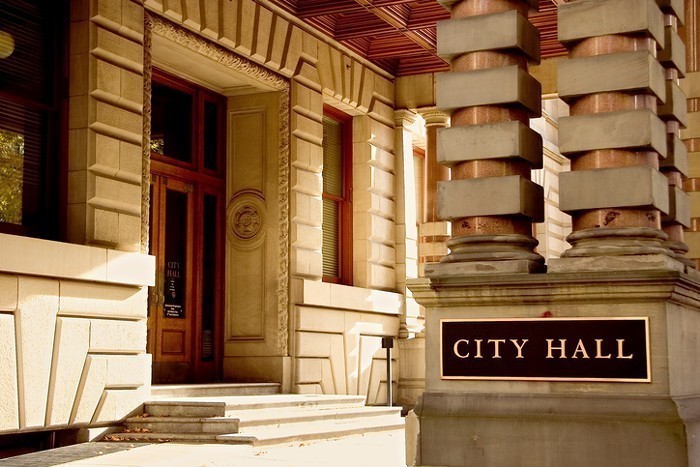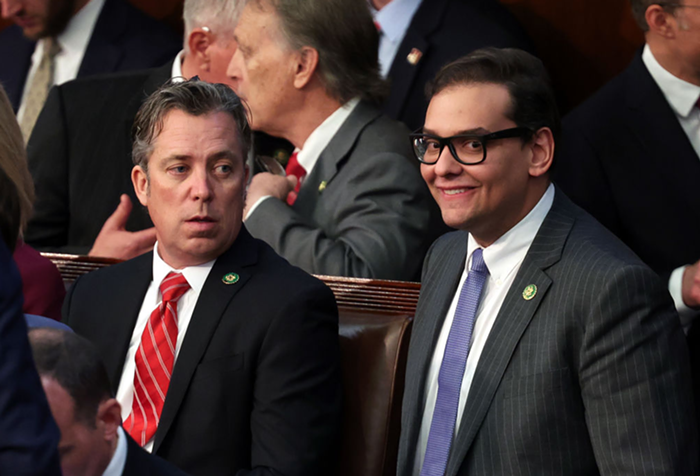"It is meditative," Roger Ebert wrote, in 1997, of Stanley Kubrick's 2001: A Space Odyssey. "It does not cater to us, but wants to inspire us, enlarge us. Nearly 30 years after it was made, it has not dated in any important detail." For Ebert, 2001 wasn't just "one of the greatest films ever made." It was an experience that went beyond staring at a screen with strangers in a dark room: "Only a few films are transcendent, and work upon our minds and imaginations like music or prayer or a vast belittling landscape."
You can watch 2001 any number of ways: It's on DVD. It's on Blu-ray. You can stream it via Amazon; you can download it from iTunes for $14.99.
But there's one way to watch 2001 that's better than any of those: When Kubrick, working alongside science-fiction novelist Arthur C. Clarke and special effects genius Douglas Trumbull, shot 2001, he did so on 70mm film—a format prized for its brightness and stability, rich colors and sound, and immersive detail.
These days, shooting on the format is reserved for a few prestige filmmakers. These days, less than 40 theaters in America even have the equipment—let alone the skill—to show a 70mm print.
Which means if you want to experience 2001 the way Kubrick intended—staring at a screen with strangers in a dark room, watching images projected from a 70mm print—you're out of luck.
Unless you happen to be in Portland this weekend. Because this weekend, the Hollywood Theatre is bringing 70mm back.
"There's a warmth to celluloid clattering gently behind you as the images flicker on screen," says Eric Morris. "It's akin to listening to your favorite album from the '70s being played on a vinyl record rather than downloaded from iTunes. There's no technological advance that can match the nostalgia of what made you fall in love with an art the first time."
Morris is a technician at NW Projection, where, along with owner Joel Miller, he services Portland-area theaters. When the Hollywood tapped Miller and Morris to set up 70mm capabilities for the theater, it was a unique job.
"Digital projection is our main area of focus now," Morris tells me, "though both of us were technicians on film equipment for years." 70mm, he says, has become "like Sasquatch to many film technicians—often talked about, but rarely seen."
There's a reason it's talked about so much.
"70mm projection provides the best image and sound possible, and the most engrossing moviegoing experience," says Dan Halsted, head programmer at the Hollywood and the guy who had the idea of bringing 70mm back to the theater. "I feel like it's our responsibility to the cinephiles of Portland to provide the best cinematic experience possible."
70mm is so beloved thanks to what it's made of—actual, old-timey film, which gives a vibrance to images that can sometimes be missing from sterile digital projection. It's also simple math. At twice the width of 35mm film, each frame of a 70mm reel can hold significantly more detail—as well as more room for sound. When properly cared for and correctly projected, many consider it to be the ideal format.
But properly caring for and correctly projecting it is costly and unwieldy. By the start of the 1970s, few directors were shooting on 70mm. Some theaters held on to their 70mm equipment (in addition to the Hollywood, theaters like Lloyd, Tigard, and the now-defunct Broadway Metroplex, Eastgate, and Westgate could all show 70mm), but by the start of the 1990s, few were using it. They'd switched over to cheaper, easier 35mm. And by 2012, 35mm had largely disappeared too—replaced by even cheaper, even easier digital projection.
Digital has many benefits, but there are some—both in theater seats and behind movie cameras—who refuse to give up on film. Last year, when director Quentin Tarantino took over Los Angeles' revered New Beverly Cinema, he told anyone who would listen that the theater would never again show a film digitally.
"To me," Tarantino said in an interview with Elvis Mitchell, "that's just television in public."
"70mm, while being the premier film format, is, quite frankly, a pain to run," Morris says. "With the physical film being so much larger, it's heavier and more cumbersome in every way."
Every time the 70mm print of 2001 will roll at the Hollywood, NW Projection's Miller will be in the projection booth, monitoring the film's focus and sound even as he swaps out heavy reels of film every 20 minutes. (2001's sci-fi transcendentalism—and Miller's time in the projection booth—clocks in at just under three hours.) It'll be a scene not unlike when the Hollywood first showed 2001 on June 13, 1968, kicking off a 42-week-long engagement with a "gala premiere" that benefitted OMSI. An ad in that day's Oregonian promised the film would be "An astounding entertainment experience, a dazzling trip to the planets and beyond the stars!"
In addition to time and effort, all this comes at a steep price: To afford the 70mm upgrade, the nonprofit Hollywood reached out to its members and other Portlanders, ultimately raising $15,000.
"We were blown away," says Kristy Conrad, the Hollywood's development and marketing manager. "There were a lot of people who were instantly excited, who jumped on board without us having to explain a thing. It's a credit to the incredible concentration of diehard movie lovers in Portland."
From there, Morris, Miller, and Halsted started the work of revamping the two Norelco AA11 projectors that sit in the projection booth at the back of the Hollywood's 384-seat main auditorium. Halsted calls the AA11, first introduced in 1955, "the Cadillac of projectors," while Miller says they're known for their "rock-steady image and for running forever."
But while the AA11s were designed to project both 35mm and 70mm, the last time the Hollywood used them for 70mm was in 1986, for the Daryl Hannah non-classic The Clan of the Cave Bear. ("In the '80s," Miller laughs, "they were putting everything out on 70mm.")
Three decades later, the projectors were missing many of the components needed for 70mm, with parts having broken down, gotten lost, or wandered off in projectionists' pockets. Even before the Hollywood's fundraiser, Halsted had been quietly working for years to track down "quite a few" parts.
"Since I'm a film collector and I'm already immersed in that world, I spent a lot of time reaching out to everyone I know across the country," he says. "Some parts came from projection technicians, some from film collectors, some from eBay. There's one film collector, whose house is filled floor to ceiling with 35mm and 70mm film, who provided some key parts."
The result now takes up much of the projection booth: Two fully refurbished AA11s that, along with a billion other fixes and improvements, boast newly outfitted lenses, film gates, magnetic sound heads, and whatever the hell "70mm intermittent sprockets" are.
But the picture's only half of it. NW Projection also installed two extra speakers behind the Hollywood's screen, allowing for increased directional audio, and retooled the theater's sound system by installing a Dolby CP200 processor—a piece of equipment that was bleeding edge when it was introduced in 1980.
"This, in actuality, is by no means a downgrade," Morris explains. "The Dolby CP200 is the ultimate processor for the 70mm sound format, and can handle even the most modern audio advancements out there."
It's a lot of work, and a lot of equipment, and a lot of parts. (Not to mention an ongoing investment: Replacement parts will be just as hard to find, and shipping costs alone for a 70mm print can hit $500.) But when Morris and Miller ran a test reel to show off their work—a test reel that happened to be that thrilling circus-train action sequence that kicks off Indiana Jones and the Last Crusade—the results were impressive, with fantastic picture and deep sound.
Even so, when Halsted—who admits to being "drawn to projects that seem impossible"—stands in the Hollywood's cramped projection booth with me, Miller, Morris, Conrad, and a whole lot of equipment, he sounds worn out.
"For me, it's about the audience," he says. "It's not enjoyable for us."
"I've been having a lot of fun," Miller says.
"Okay," Halsted says. "Joel's been having fun."
All that work, Halsted says, pays off for moviegoers—whether they're conscious of it or not. Halsted remembers this past summer, when the Hollywood played Christopher Nolan's Interstellar, with some screenings projected on 35mm and others projected digitally. When Halsted heard audiences discussing the movie afterward, he noticed those who watched it digitally talked about how the movie looked—while those who saw it on 35mm talked about how it made them feel.
And during the 35mm screenings, Halsted remembers, there were a lot fewer iPhones lighting up the theater.
"Film involves people," he says. "There's something about the 24 frames per second that clicks with people."
The plan is to keep that engagement going. Once 2001 finishes its run, Halsted promises more 70mm screenings, some of which will be films that were shot on 35mm and "blown up" to 70mm (Last Crusade is one of those, along with Die Hard, Vertigo, and Tobe Hooper's space-vampire flick Lifeforce) and some of which will be "the well-known 70mm classics" shot in the format, like West Side Story and Lawrence of Arabia.
And while new 70mm productions are few and far between, at least one film is currently being shot on the format.
"I'm obviously excited to hopefully open Quentin Tarantino's The Hateful Eight at the end of this year," Halsted says.
Miller, meanwhile, has his eyes on another upcoming movie he'd love to see on 70mm. "I'm crossing my fingers," he says, "for Star Wars."














